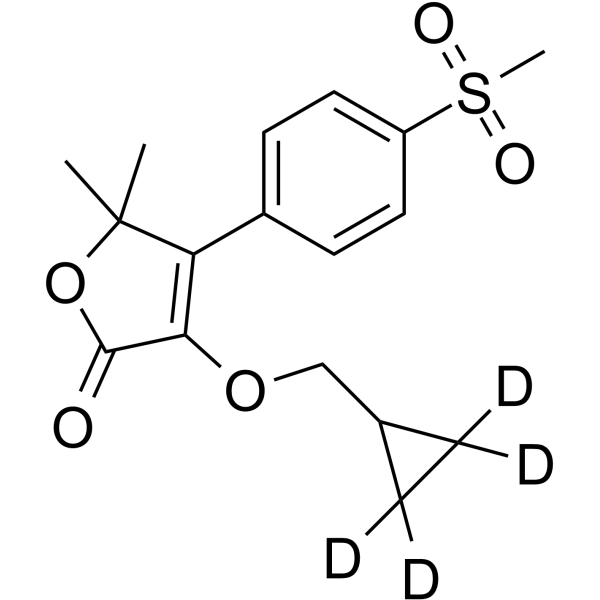Firocoxib-d4
Modify Date: 2024-01-14 15:54:32

Firocoxib-d4 structure
|
Common Name | Firocoxib-d4 | ||
|---|---|---|---|---|
| CAS Number | 1325700-11-5 | Molecular Weight | 340.43 | |
| Density | N/A | Boiling Point | N/A | |
| Molecular Formula | C17H16D4O5S | Melting Point | N/A | |
| MSDS | N/A | Flash Point | N/A | |
Use of Firocoxib-d4Firocoxib-d4 (ML 1785713-d4) is the deuterium labeled Firocoxib. Firocoxib (ML 1785713) is a potent, selective and orally active COX-2 inhibitor with an IC50 of 0.13 μM. Firocoxib shows 58-fold more selective for COX-2 than COX-1 (IC50 of 7.5 μM). Firocoxib has anti-inflammatory effects[1]. |
| Name | Firocoxib-d4 |
|---|
| Description | Firocoxib-d4 (ML 1785713-d4) is the deuterium labeled Firocoxib. Firocoxib (ML 1785713) is a potent, selective and orally active COX-2 inhibitor with an IC50 of 0.13 μM. Firocoxib shows 58-fold more selective for COX-2 than COX-1 (IC50 of 7.5 μM). Firocoxib has anti-inflammatory effects[1]. |
|---|---|
| Related Catalog | |
| In Vitro | Stable heavy isotopes of hydrogen, carbon, and other elements have been incorporated into drug molecules, largely as tracers for quantitation during the drug development process. Deuteration has gained attention because of its potential to affect the pharmacokinetic and metabolic profiles of drugs[1]. |
| References |
| Molecular Formula | C17H16D4O5S |
|---|---|
| Molecular Weight | 340.43 |